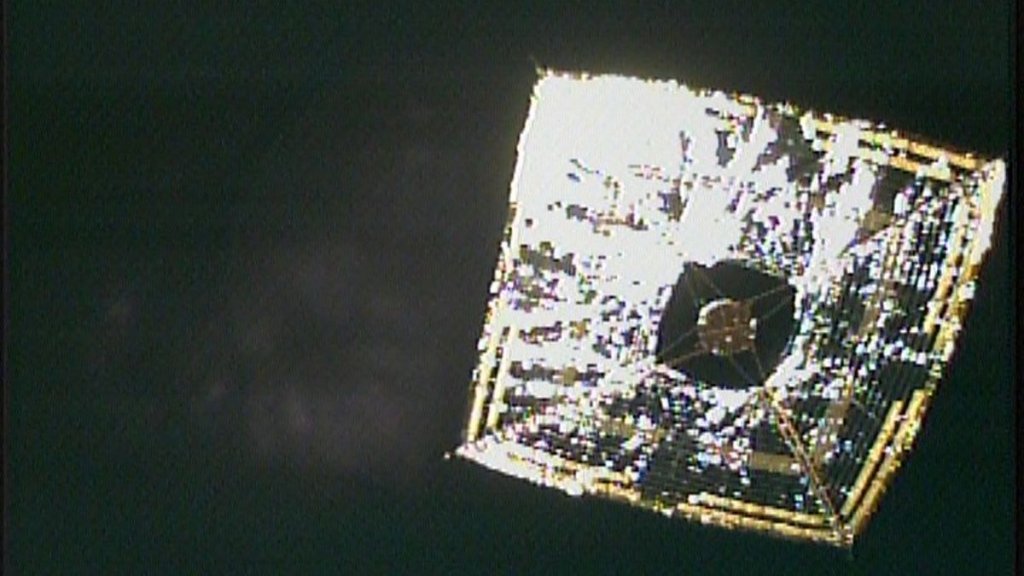
On This Day In Space: May 21, 2010: Japan launches 1st solar sail ‘Ikaros’ (Image Credit: Space.com)
On May 21, 2010, Japan launched the first successful solar sail Ikaros into space.
Solar sail technology uses light for spacecraft propulsion, but not in the same way that traditional solar panels do. While solar panels use light to generate electricity, spacecraft with solar sails rely only on the light itself to cruise through outer space. Particles of light called photons actually push the spacecraft forward. A single photon can’t accomplish this on its own, but with enough photons striking a spacecraft, propulsion is possible—you just need a big surface to catch all that light.

Scientists have been toying with this idea since the 1800s, but Japan finally proved that it was possible when the country launched the Ikaros mission. The mission’s name stands for Interplanetary Kite-craft Accelerated by Radiation of the Sun. This experimental spacecraft had a 2,100-square foot sail that looked like a giant space kite.
Japan’s space agency was also able to steer the spacecraft by controlling the orientation of liquid crystals in LCD panels that were built into the solar sail. Ikaros sailed all the way to Venus in just six months before continuing on its orbit around the sun.
On This Day in Space Archive!
Still not enough space? Don’t forget to check out our Space Image of the Day, and on the weekends our Best Space Photos and Top Space News Stories of the week.
Follow us @Spacedotcom and on Facebook.








